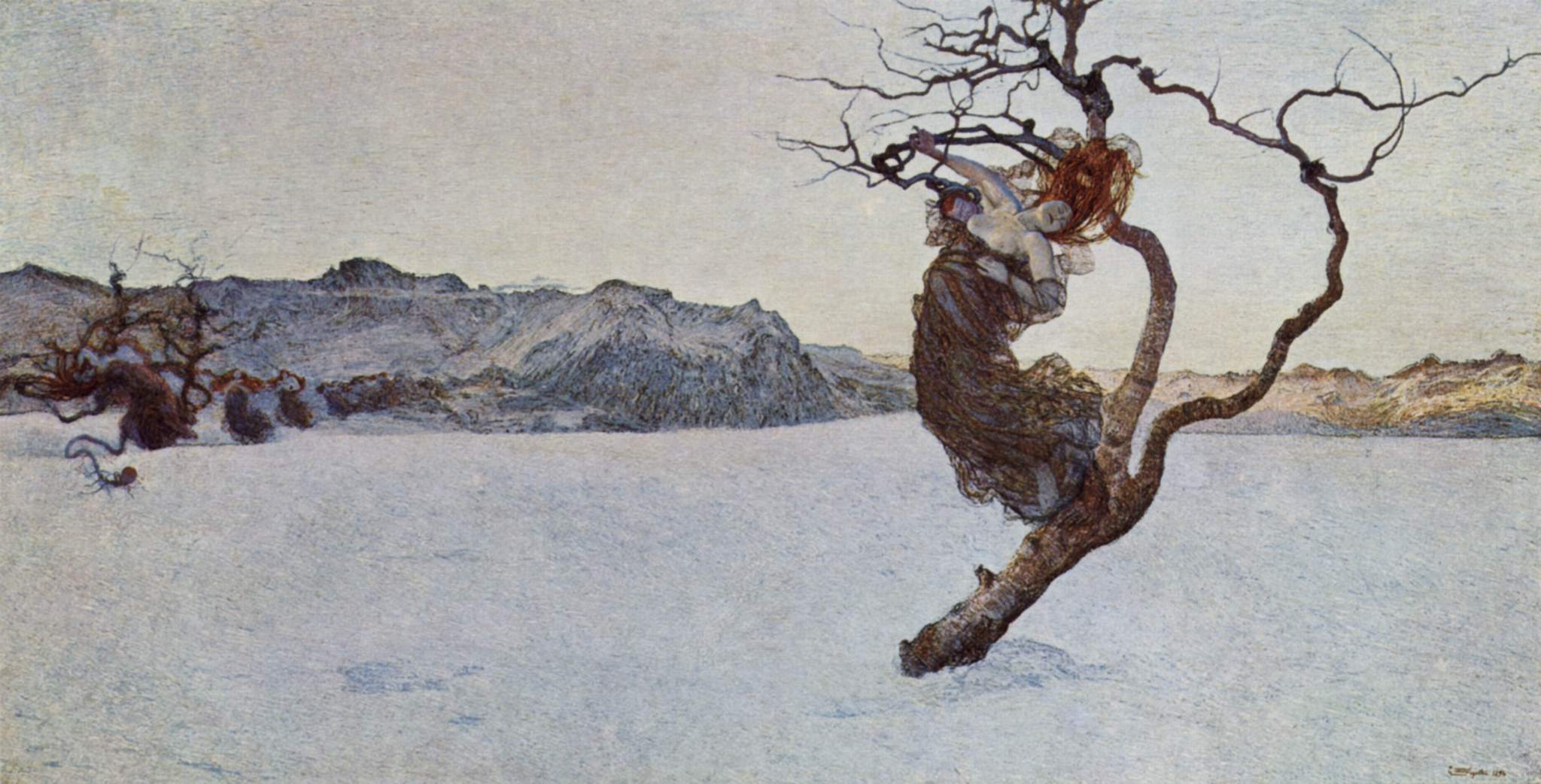|
The Punishment Of Lust
''The Punishment of Lust'' ( it, La Punizione della Lussuria), also called ''The Punishment of Luxury'', is an 1891 oil painting on canvas by the artist Giovanni Segantini. Background Giovanni Segantini was born in the County of Tyrol in the Austro-Hungarian Empire, but his parents died when he was still young and he went to live with his step-sister Irene in Milan. Hoping that she and Giovanni could become Italian citizens, Irene revoked their Austrian citizenship, but for some reason failed to apply for Italian citizenship, leaving the pair stateless. Giovanni soon ran away and after a time living on the streets was sent to a reformatory, where he was encouraged to take up art. During 1873, his half-brother Napoleon took him in and put him to work in his photographic studio. He worked as a decorative artist and studied at Accademia di Belle Arti di Brera in Milan and had some success as a painter, but eventually grew tired of the strictures of the academy and relocated wit ... [...More Info...] [...Related Items...] OR: [Wikipedia] [Google] [Baidu] |
Giovanni Segantini
Giovanni Segantini (15 January 1858 – 28 September 1899) was an Italian painter known for his large pastoral landscapes of the Alps. He was one of the most famous artists in Europe in the late 19th century, and his paintings were collected by major museums. In later life, he combined a Divisionist painting style with Symbolist images of nature. He was active in Switzerland during the last period of his life. Biography Giovanni Battista Emanuele Maria Segatini 'sic''was born at Arco in Trentino, which was then part of the County of Tyrol in the Austro-Hungarian Empire. He later changed his family name by adding an "n" after the "a". He was the second child of Agostino Segatini (1802–1866) and Margarita De Girardi (1828–1865). His older brother, Lodovico, died in a fire the year Giovanni was born. During the first seven years of his life, his father, who was a tradesman, traveled extensively while looking for work. Except for a six-month period in 1864 when Agostino re ... [...More Info...] [...Related Items...] OR: [Wikipedia] [Google] [Baidu] |
The Bad Mothers
''The Bad Mothers'' or ''The Evil Mothers'' ( it, Le cattive madri) is an oil on canvas painting by Giovanni Segantini, created in 1894, now in the Österreichische Galerie Belvedere, in Vienna. It is the last of four works in which he keeps returning to the motif of women in trees. The other three were ''The Fruit of Life'' (1889), ''The Punishment of Lust'' (1891) and ''The Angel of Life'' (1894), and together, they were his first Symbolist Symbolism was a late 19th-century art movement of French and Belgian origin in poetry and other arts seeking to represent absolute truths symbolically through language and metaphorical images, mainly as a reaction against naturalism and realis ... works.''Segantini: il ritorno a Milano'', Mazzotta (Skira), pp. 234–235, File:Giovanni_Segantini_005.jpg, ''The Fruit of Life'' (1889) File:Segantini_Die_Strafe_der_Wollüstigen.jpg, ''The Punishment of Lust'' (1891) File:Engel des Lebens 1894.jpg, ''The Angel of Life'' (1894) Ref ... [...More Info...] [...Related Items...] OR: [Wikipedia] [Google] [Baidu] |
Paintings By Giovanni Segantini
Painting is the practice of applying paint, pigment, color or other medium to a solid surface (called the "matrix" or "support"). The medium is commonly applied to the base with a brush, but other implements, such as knives, sponges, and airbrushes, can be used. In art, the term ''painting ''describes both the act and the result of the action (the final work is called "a painting"). The support for paintings includes such surfaces as walls, paper, canvas, wood, glass, lacquer, pottery, leaf, copper and concrete, and the painting may incorporate multiple other materials, including sand, clay, paper, plaster, gold leaf, and even whole objects. Painting is an important form in the visual arts, bringing in elements such as drawing, Composition (visual arts), composition, gesture (as in gestural painting), narrative, narration (as in narrative art), and abstraction (as in abstract art). Paintings can be naturalistic and representational (as in still life and landscape art, lands ... [...More Info...] [...Related Items...] OR: [Wikipedia] [Google] [Baidu] |


